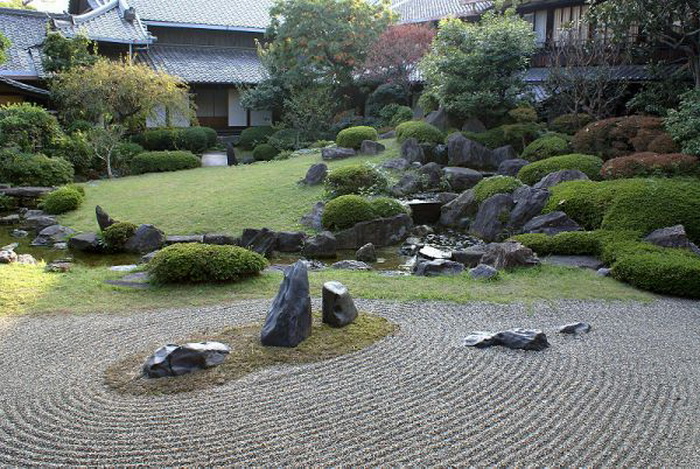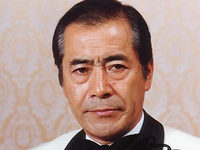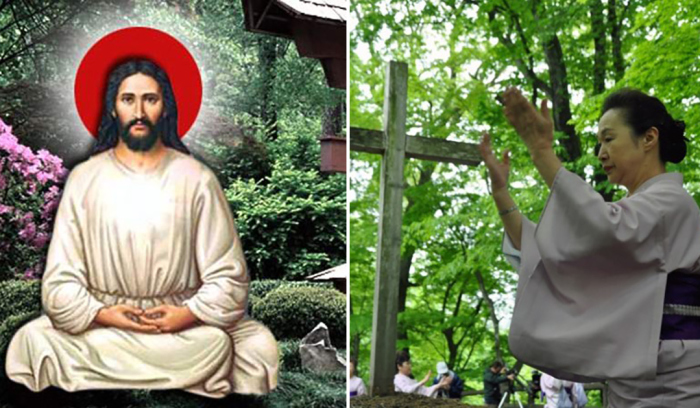MIN TANAKA: DANCE OF THE WORLD
 The building of the Theater School of Dramatic Art Theater on Sretenka is not just a wall. This is a huge bright space, getting into which, a person immediately becomes an object of art. Architecture (one of the authors of the project is the Artistic Director of the Theater Anatoly Vasiliev) is designed so that anyone who appears there feels as if in the arena, on the podium, and it is not by chance that the white walls do not imply approaching them, it is no coincidence that there are no chairs along walls. You must perforce move, climb and descend through the numerous ladders, getting onto balconies and platforms, every second building your relationship with space, with an echo from your voice and steps. The theater has already begun.
The building of the Theater School of Dramatic Art Theater on Sretenka is not just a wall. This is a huge bright space, getting into which, a person immediately becomes an object of art. Architecture (one of the authors of the project is the Artistic Director of the Theater Anatoly Vasiliev) is designed so that anyone who appears there feels as if in the arena, on the podium, and it is not by chance that the white walls do not imply approaching them, it is no coincidence that there are no chairs along walls. You must perforce move, climb and descend through the numerous ladders, getting onto balconies and platforms, every second building your relationship with space, with an echo from your voice and steps. The theater has already begun.
And now, if you’re lucky, at some point you notice a tall and thin man, usually dressed in black, who, like you, crosses this space. He is never in a hurry, and you can watch him for quite some time, until he disappears behind the door of the auditorium. He is focused and alienated. And although in the performances in which his students are engaged, he can immediately be found with his eyes, he chooses a place so as not to be the center of attention. He always answers greetings with a polite bow and a smile, but politeness is of a special kind: he gives no reason for familiarity and familiarity.
Interviewing him is almost doomed. And not because he is detached from questions or does not give answers. But these answers are extremely monosyllabic, which in his case is quite natural. As we will see later, his whole life and the purpose of his creative method make verbal expression meaningless. Therefore, if someday you happen to communicate with Min Tanaka (it’s time to say who we are talking about), it is better to just take a closer look at what he is doing on the stage, and only then talk to him. But even in this case, you will get the answer: “Watch the play. There – that’s it.”
Writing about Min Tanaka is the hardest task. For different reasons. Words, as we said above, will not reflect a hundredth of the truth. This is the case when language becomes an enemy, when, as the ancient Taoists used to say (in Zen Buddhism there is also such a situation), you need to see the invisible and feel the intangible. In other words, in order to appreciate what Min Tanaka does, one must be able to penetrate into the area of the subconscious that is responsible for communicating with the tissue of the original, eternal and true. In order for the analysis of his work to be more or less adequate (both for the spectator who came to the play and for the reader of an article about him), it is necessary, at least in general terms, to get acquainted with the history of eastern cultures and eastern philosophy. They are the beginning of the path that should go to Min Tanaka. At the same time (Sensei himself also thinks so), it should not be confined to Eastern culture alone. Ultimately, he seeks to create a new dance that will have to incorporate all of human experience and, at the same time, begin with a white sheet. He creates around himself a group of people without restrictions on age, social status and occupation. The criterion for him is only the answer to the question why a person came to him at the School of Dance and the desire of the person who came to know himself and his surroundings through dance. But this is not a dance in the conventional sense. This is being. After all, you can enter the space (be it a stage, street or garden) and just be there. This thought of Min Tanaka is already bringing us closer to the answer to his work.
In addition, the fact that Min Tanaka collaborates precisely with Vasilyev and with no other Russian theater figure plays an extremely important role here. Vasiliev, research director, philosopher director, revealing the intangible fabric of the creative process, theatrical space, the soul of the actor. Many years of practical activity, reflection, study of various sources led him to understand the theater as a synthetic and universal art, as an original phenomenon, acquiring the most diverse forms throughout the history of mankind. Living in the 20th and 21st centuries, Vasiliev is a unique theatrical figure who tried to concentrate in his hands the experience of all previous generations and came to the significance of the theater as a mysterious, universal phenomenon. The whole experience of a person who appeared on the earth millions of years ago, if this experience is lively, and not limited to fixing dates, is an invaluable treasure for every newborn. At the genetic level, this experience exists and does not disappear, you just need to find this experience in yourself. Not historical experience is meant, but the subconscious – the need to express oneself through rites and mysteries, through carnival and drama. Vasiliev’s goal is to discover this and recreate on the site, through a living entity – an actor. Therefore, the main objects of his research and search for his students are feeling (that which is born inside) and, as a means of expressing (extracting) this feeling from the depths of the subconscious, body and speech.




